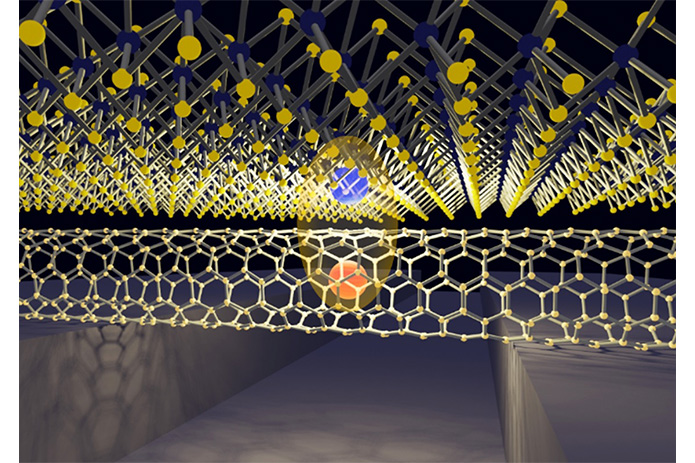Share this
Authors
Hiroto Ogura, Seiya Kawasaki, Zheng Liu, Takahiko Endo, Mina Maruyama, Yanlin Gao, Yusuke Nakanishi, Hong En Lim, Kazuhiro Yanagi, Toshifumi Irisawa, Keiji Ueno, Susumu Okada, Kosuke Nagashio, and Yasumitsu Miyata
Abstract
In-plane heterostructures of transition metal dichalcogenides (TMDCs) have attracted much attention for high-performance electronic and optoelectronic devices. To date, mainly monolayer-based in-plane heterostructures have been prepared by chemical vapor deposition (CVD), and their optical and electrical properties have been investigated. However, the low dielectric properties of monolayers prevent the generation of high concentrations of thermally excited carriers from doped impurities. To solve this issue, multilayer TMDCs are a promising component for various electronic devices due to the availability of degenerate semiconductors. Here, we report the fabrication and transport properties of multilayer TMDC-based in-plane heterostructures. The multilayer in-plane heterostructures are formed through CVD growth of multilayer MoS2 from the edges of mechanically exfoliated multilayer flakes of WSe2 or NbxMo1–xS2. In addition to the in-plane heterostructures, we also confirmed the vertical growth of MoS2 on the exfoliated flakes. For the WSe2/MoS2 sample, an abrupt composition change is confirmed by cross-sectional high-angle annular dark-field scanning transmission electron microscopy. Electrical transport measurements reveal that a tunneling current flows at the NbxMo1–xS2/MoS2 in-plane heterointerface, and the band alignment is changed from a staggered gap to a broken gap by electrostatic electron doping of MoS2. The formation of a staggered gap band alignment of NbxMo1–xS2/MoS2 is also supported by first-principles calculations.
These Related Stories

